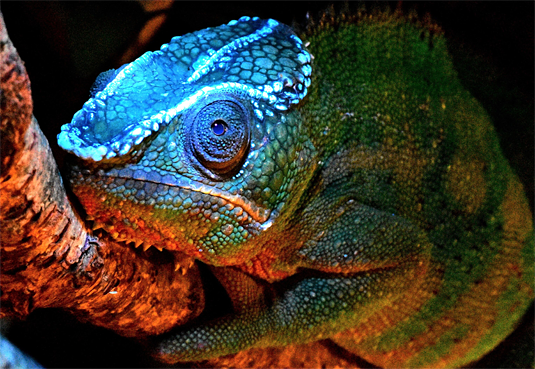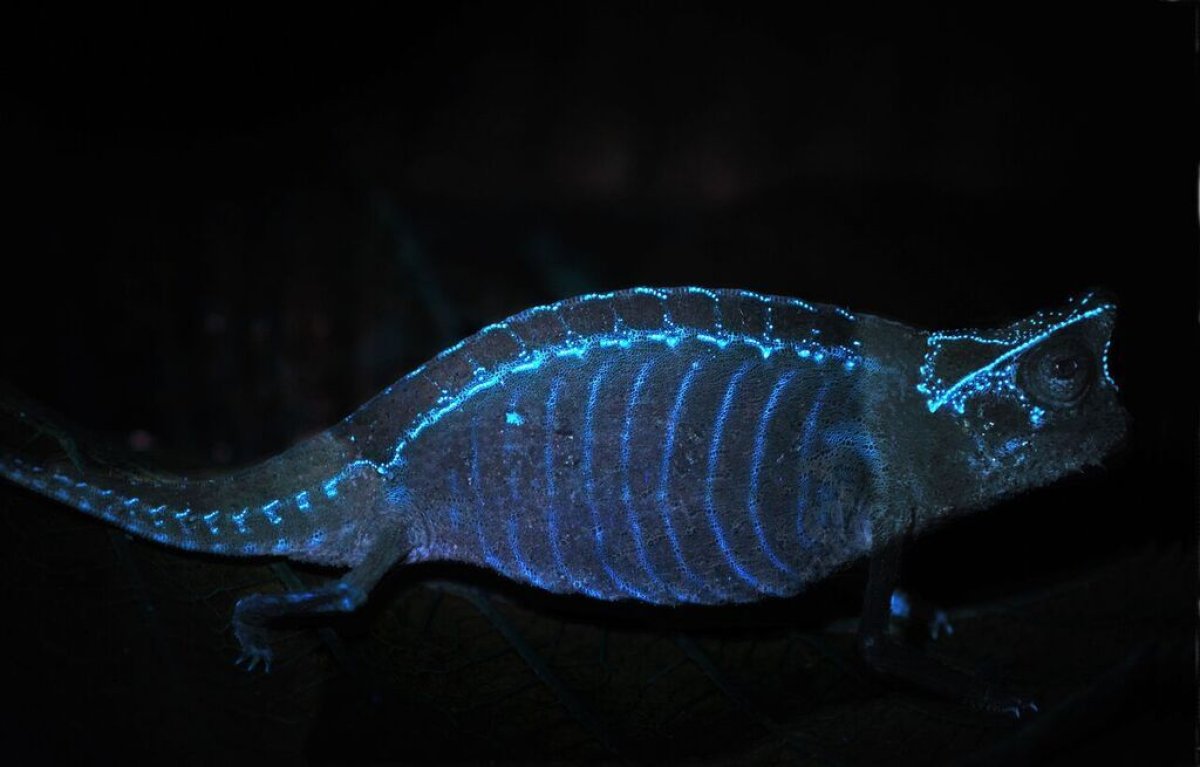
Chameleons don't just change the color of their skin—scientists have discovered their bones can glow fluorescent under ultraviolet light, creating intricate luminous patterns.
The ability, it turns out, is widespread among chameleons from Madagascar and other parts of Africa. But, this is the first time researchers have reported the impressive phenomenon. Their results were published in Nature Scientific Reports.
"It has long been known that bones fluoresce under UV light, but that animals use this phenomenon to fluoresce themselves has surprised us and was previously unknown," Frank Glaw, Curator of Herpetology at the Bavarian State Collection of Zoology in Germany, said in a statement.
The researchers shone a UV light on 160 different chameleon specimens, spanning 31 species. Many of the creatures emitted a distinct blue glow under the lamp.
"We could hardly believe our eyes," said David Prötzel, lead author of the study and Ph.D. student at the Bavarian State Collection. "Almost all species showed blue, previously invisible patterns on the head, some even over the whole body."

The team used sophisticated scans to compare the distribution of the fluorescent patterns and the structure of the chameleons' skulls. The glowing spots matched the lizards' bony bumps and ridges perfectly.
The scientists used tissue analysis to work out the mechanism behind the mystical glow. Ultraviolet light can penetrate the very thin skin covering the animals' skulls. This is absorbed by the bones beneath, which emit a blue fluorescent light.
Glowing bones might help chameleons communicate, the authors believe.
Males and females have different numbers of bumps on their skulls, which means their patterns should look distinct. Contrasting well against a green and brown rainforest backdrop, the blue glow will mark individual chameleons out as male or female from afar.
The researchers suspect the patterns will shine even more brightly to chameleons, given they can see the ultraviolet light, unlike humans.
The chameleon is not alone in producing a mysterious glow—various marine creatures are known to emit fluorescent light. The scientists think more glowing land-bound animals are just waiting to be discovered.
Uncommon Knowledge
Newsweek is committed to challenging conventional wisdom and finding connections in the search for common ground.
Newsweek is committed to challenging conventional wisdom and finding connections in the search for common ground.
About the writer
Katherine Hignett is a reporter based in London. She currently covers current affairs, health and science. Prior to joining Newsweek ... Read more
To read how Newsweek uses AI as a newsroom tool, Click here.








